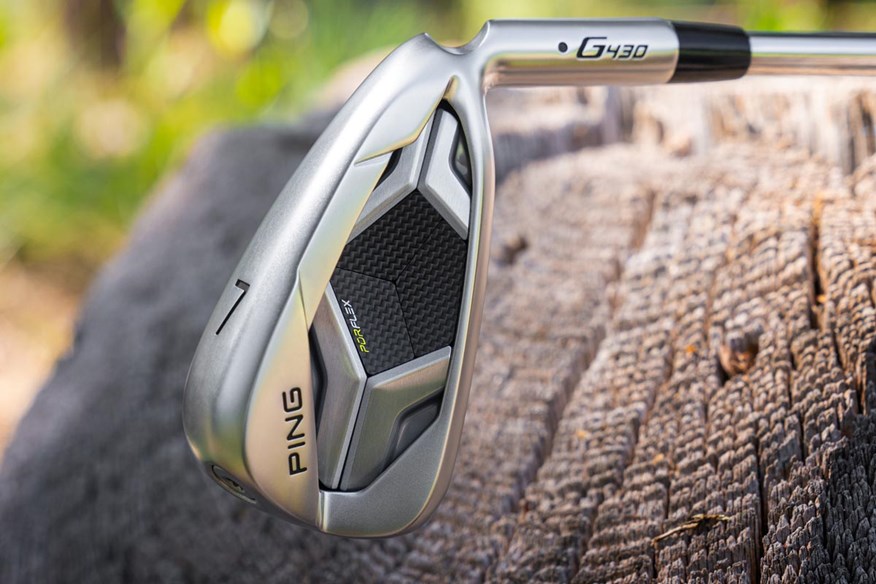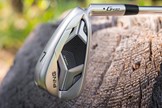Ping G430 irons promise BIG distance gains over G425
Last updated:
The Ping G430 iron blends faster ball speeds with higher launch and increased forgiveness to create a brilliant game-improving iron that’s perfect for mid-handicap golfers.
Ping’s G family has been among the best golf irons since the original Ping G2 iron launched back in 2004. Every model since has been ever so slightly better looking, more forgiving, and more powerful. But rather than simply continue that trend, Ping started the development of the new G430 iron by asking themselves: ‘How do distance irons lead to better scoring?’
Thanks to Ping’s continual studies into golfers and their equipment, the brand knew 75% of the iron shots hit by mid-handicap golfers impact low on the clubface. It makes perfect sense then to make lowering the new G430’s center of gravity a priority, along with optimizing the face’s variable thickness to reflect low-face impacts.
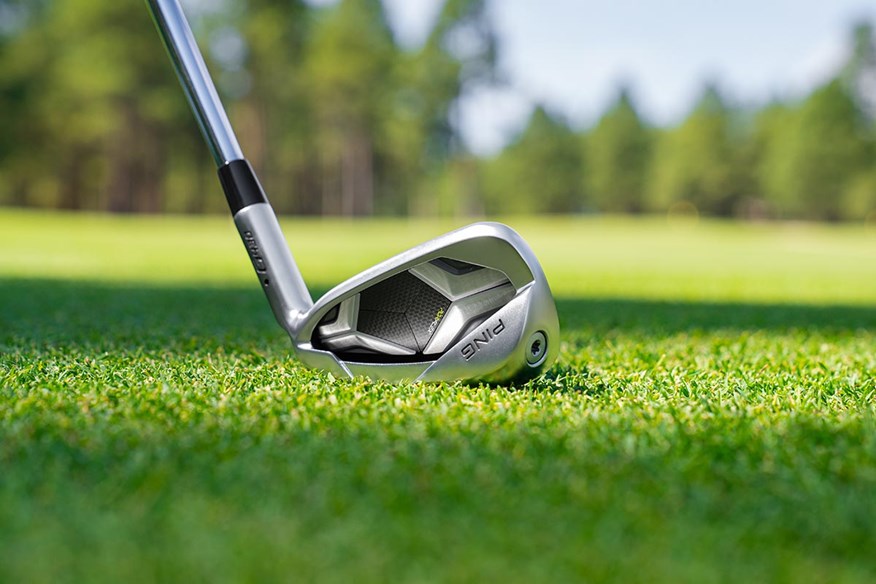
Ping’s previous G425 iron was one of the best golf irons of the last two years, yet incredibly the brand are claiming a 7-10 yard carry distance gain across the whole new G430 set, which they say makes them “distance competitive but scoring uncompromised”.
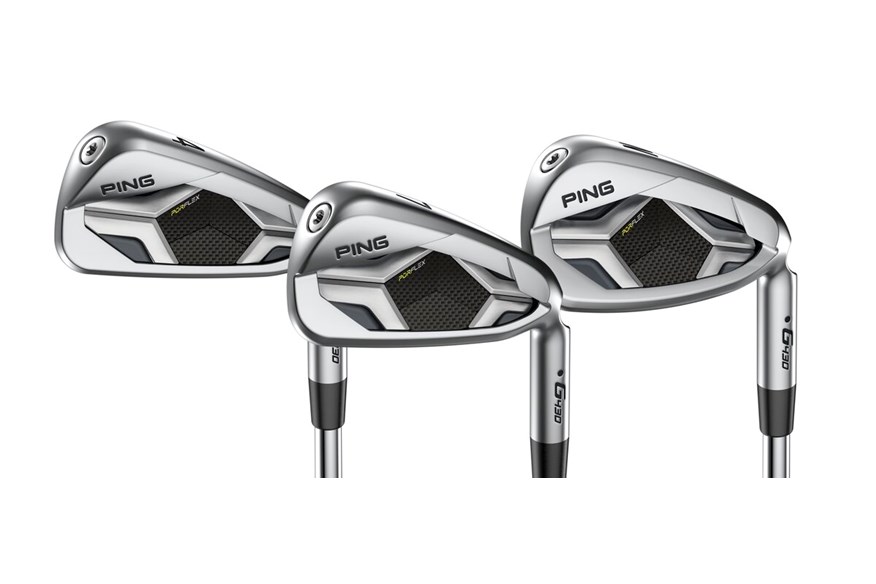
Everything you need to know about the Ping G430 iron
Thin and fast face
Thanks to a new heat treatment, the G430’s 17-4 Hyper stainless-steel face is 3% thinner than its predecessor’s. The brand say the thinner face, along with fractionally stronger lofts (29° 7-iron vs 30° in the G425 iron), deliver 2+ mph faster ball speeds.
Thanks to the new lower CG, the brand also reckon golfers can expect greater maximum shot height, so there will be no difficulty stopping shots on the dancefloor.
By dropping the center of gravity down (it’s 0.050” lower throughout the set), golfers get better feel and more speed, without needing to change their impact location. In short, Ping have brought the sweetspot to you.
More compact look
The ‘G’ marquee has been the best Ping iron in terms of numbers sold since the model was first introduced in 2004. Over the last two generations talk has turned to the ‘G’ becoming slightly more compact and desirable (particularly in the scoring irons), but doing so with zero trade-offs in terms of performance.
This time around, thanks to a shorter hosel, Ping’s engineers reckon golfers get a slightly more compact cosmetic without touching the forgiveness on offer.
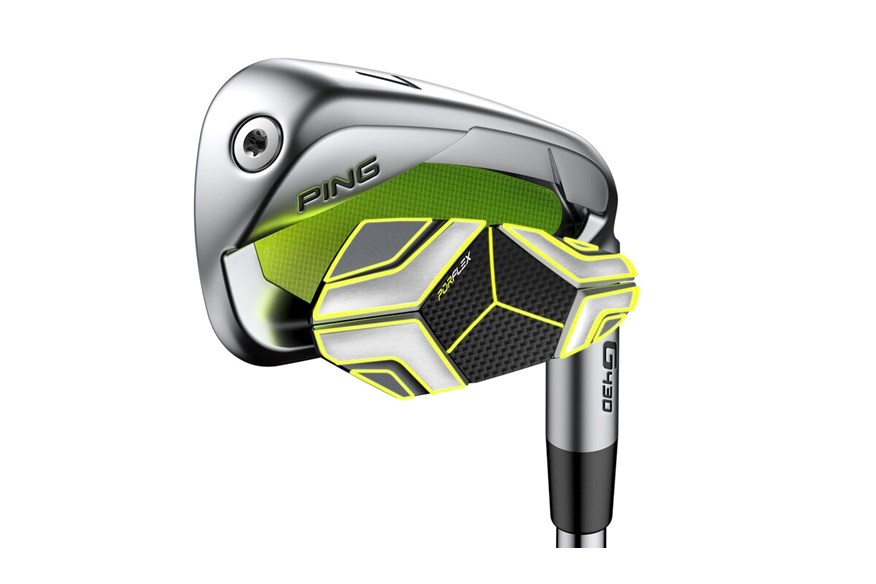
Badge of honour
Avid equipment fans will have spotted over the last few years how brands are moving away from traditional cavity badges in irons. Ping say they’re doing this because badges restrict face flex at impact. But where others have turned to hollow body and cap back constructions, Ping’s dedication to engineering brilliance has led them to create a badge that flexes.
The new PURFLEX badge in the G430’s cavity back is made up of 15 different pieces and it’s got 7 flexible zones. Ping say the combination of an aluminum chassis, carbon fiber sections, 7 ABS molded pieces and a damping tape backer, improve feel and sound, encourage additional face flex and help reduce spin (which adds distance, but doesn’t affect stopping power thanks to a higher shot height).
Lower MOI but better dispersion
Golfers for years have been told how MOI equals forgiveness, but Ping are happy to decrease the MOI of the G430 iron fractionally (from 3,360g cm2 to 3,196g cm2), safe in the knowledge that thanks to being lower spinning the model will offer golfers a 23% lower dispersion than the previous G425. It means the G430 will still be one of the most forgiving irons on the market.
More bounce
‘G’ irons have always been about playability, and by adding 1° more bounce to the soles of the G430 golfers get extra insurance against hitting destructive heavy and fat shots.
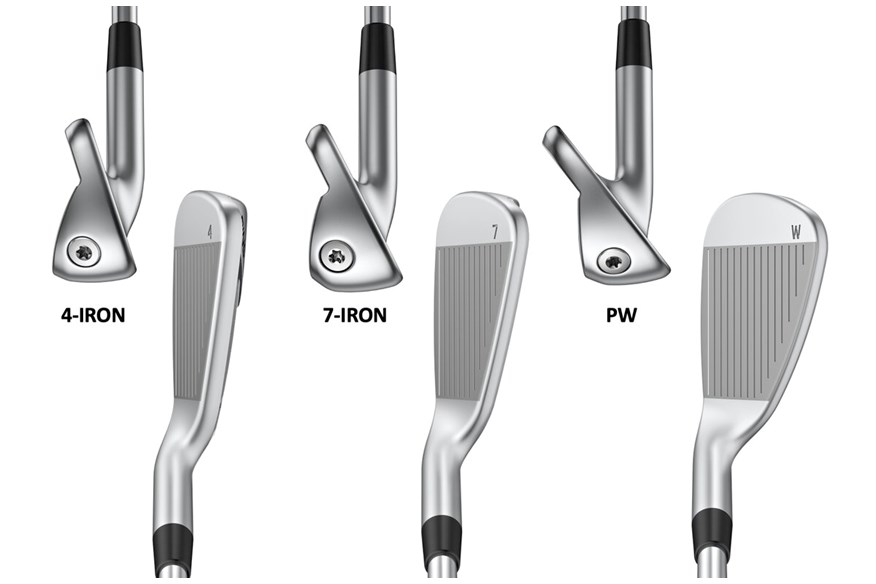
There’s a new High Launch set-up for moderate-speed players
It would be really easy to look at Ping strengthening the lofts of the G430 and say the model is no longer an iron for moderate-speed players, but that couldn’t be further from the truth. For the first time, Ping have developed a whole new High Launch set-up within the whole G430 family, and they reckon the model will account for 10-30% of ‘G’ iron sales going forward.
The new HL setup is approximately 15% lighter across the family, whether you’re buying a driver, fairway wood, hybrid or irons, and each comes with a swing weight to match slower swing speed players. A Fujikura-produced 35/45g Ping Alta Quick shaft has also been developed specifically for the HL’s target player. If you swing a 7-iron less than 75mph, the new Ping G430 are right up your street.
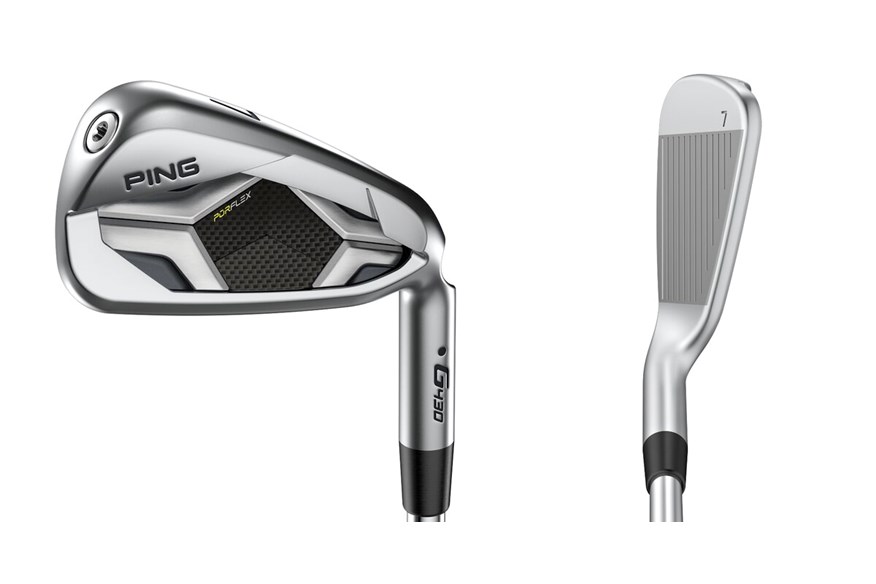
Ping G430 iron
RRP: £150/$170 per iron (steel) / £160/$180 per iron (graphite)
Stock shaft: Ping AWT 2.0 (s), Ping Alta CB Black (g)
No upcharge shafts: Dynamic Gold 105 (s), Project X 10 (s), Dynamic Gold 120 (s), Dynamic Gold (s), KBS Tour (s), Nippon NS Pro Modus3 105 (s), True Temper Elevate MPH (s, Ping Alta CB Slate (g), UST Recoil (g)
7-iron loft: 29°
Forgiveness rating: 3.5/5 (Mid-High Handicap Iron)
Check out our full Ping G430 iron review.
Specs: Ping G430 irons
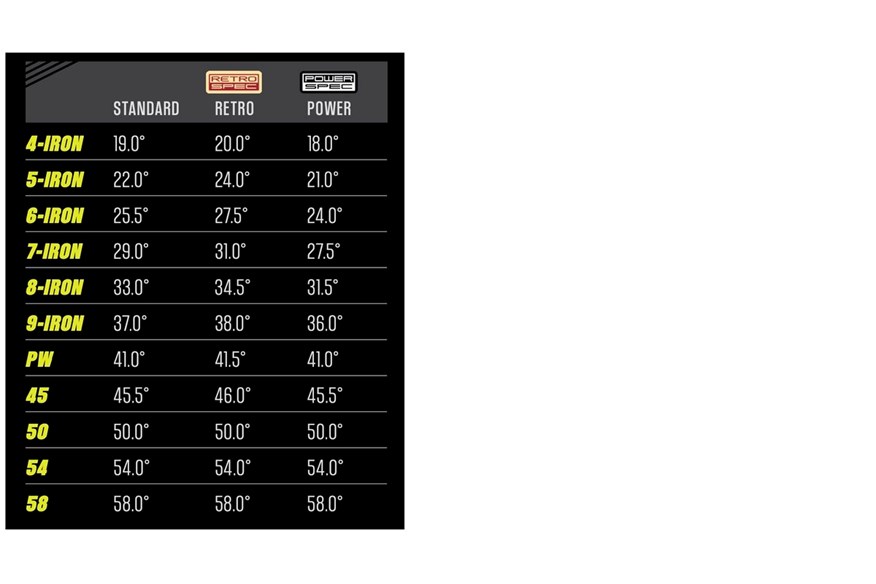
Distance gains
Ping have added up the distance gains that players of different swing speeds can expect to see by making a full-bag switch from G425 to G430. As you can see, the irons are a significant part of that, meaning G430 will be a very tempting option for anyone wanting some extra carry distance with their irons.
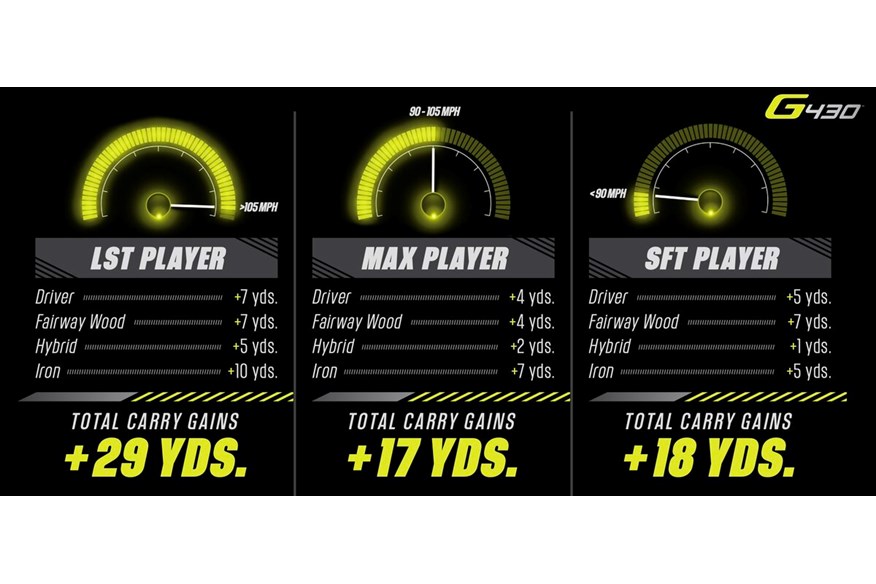
READ NEXT
